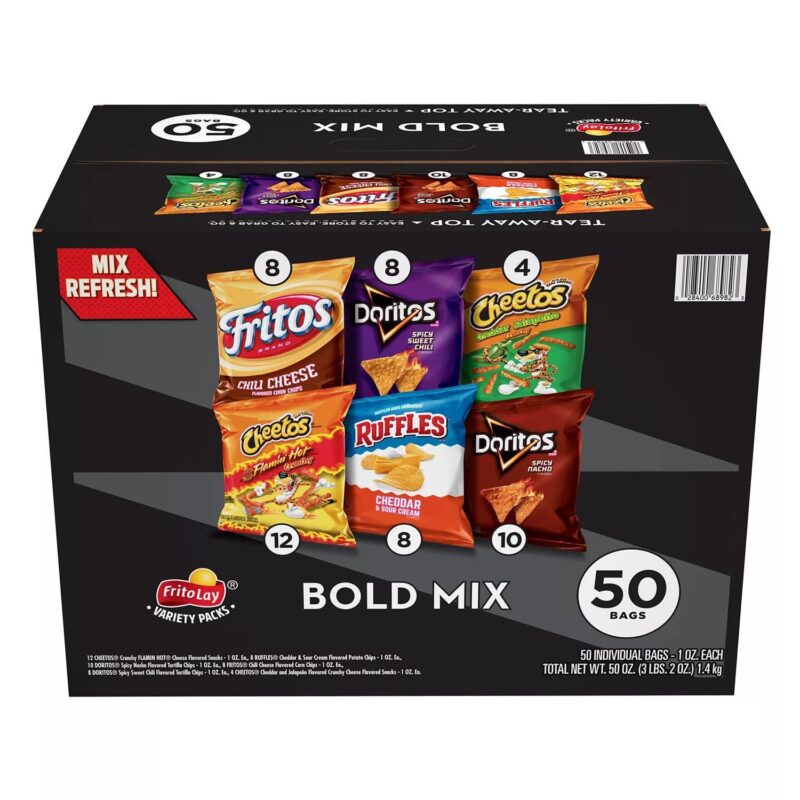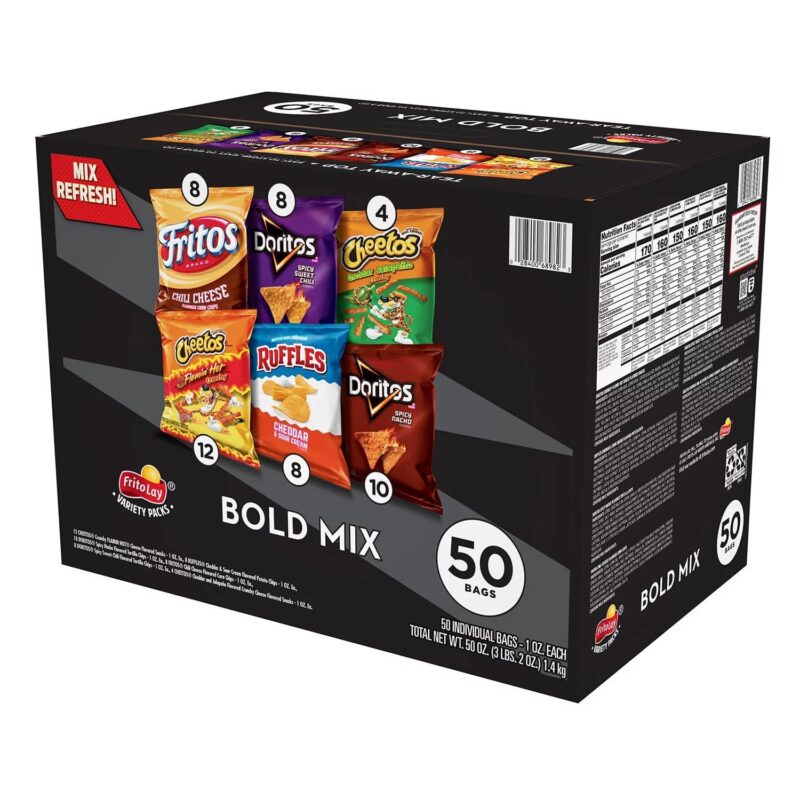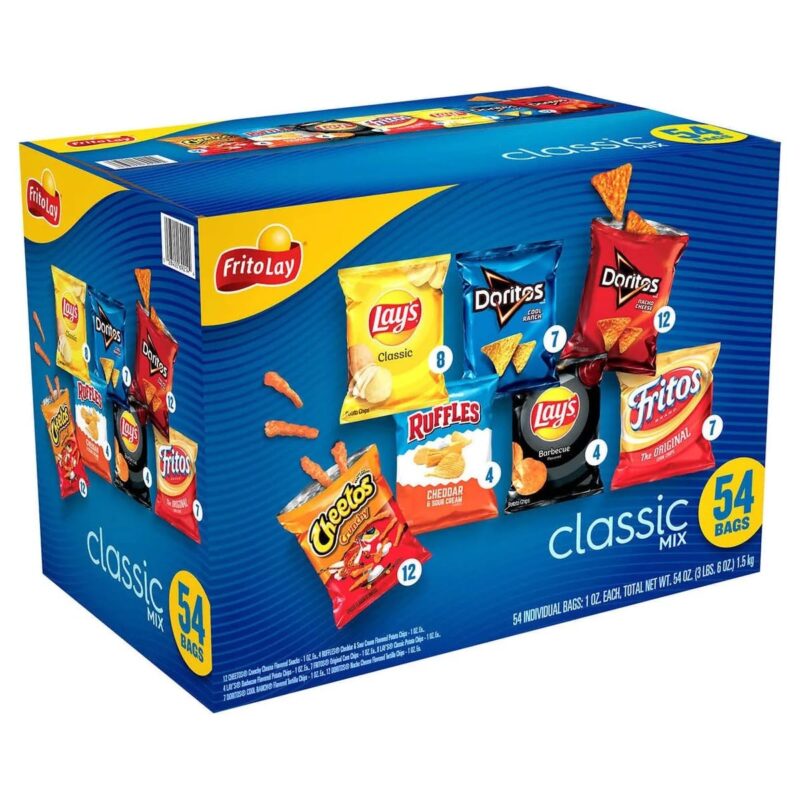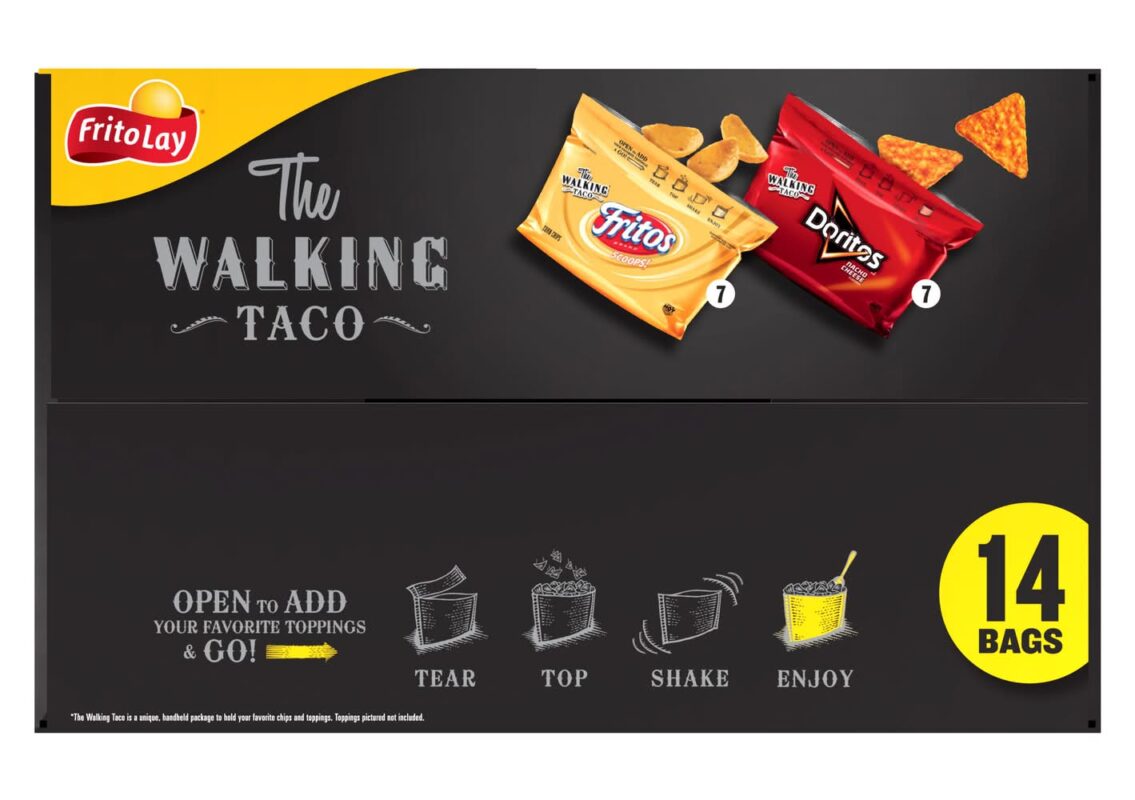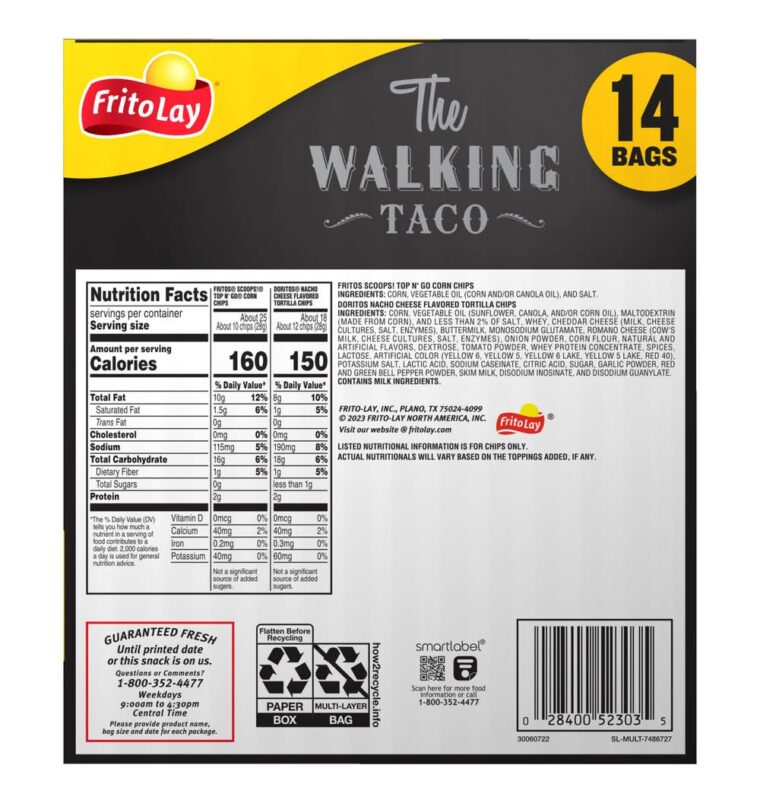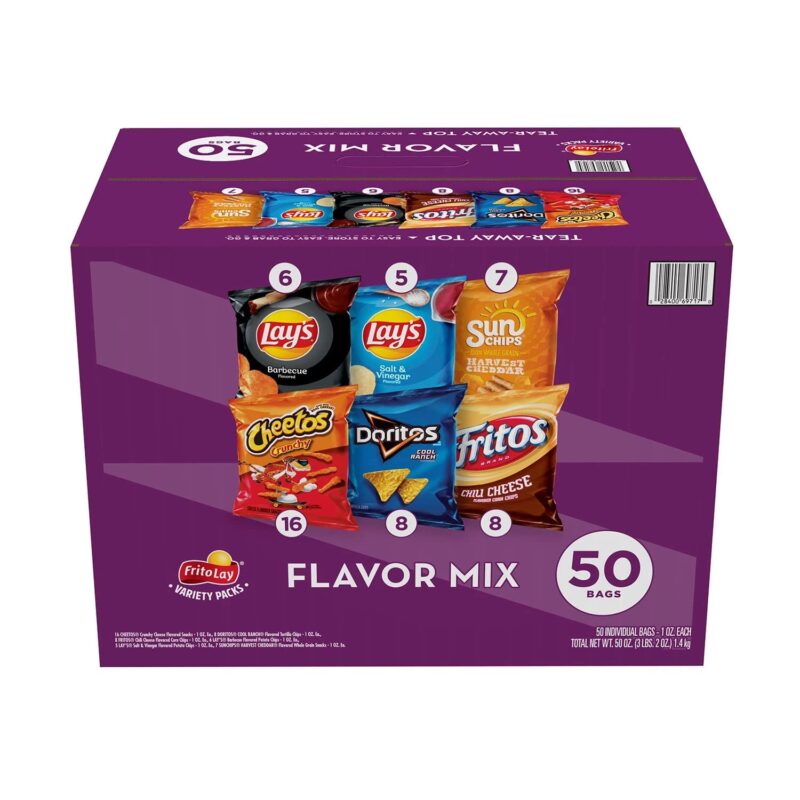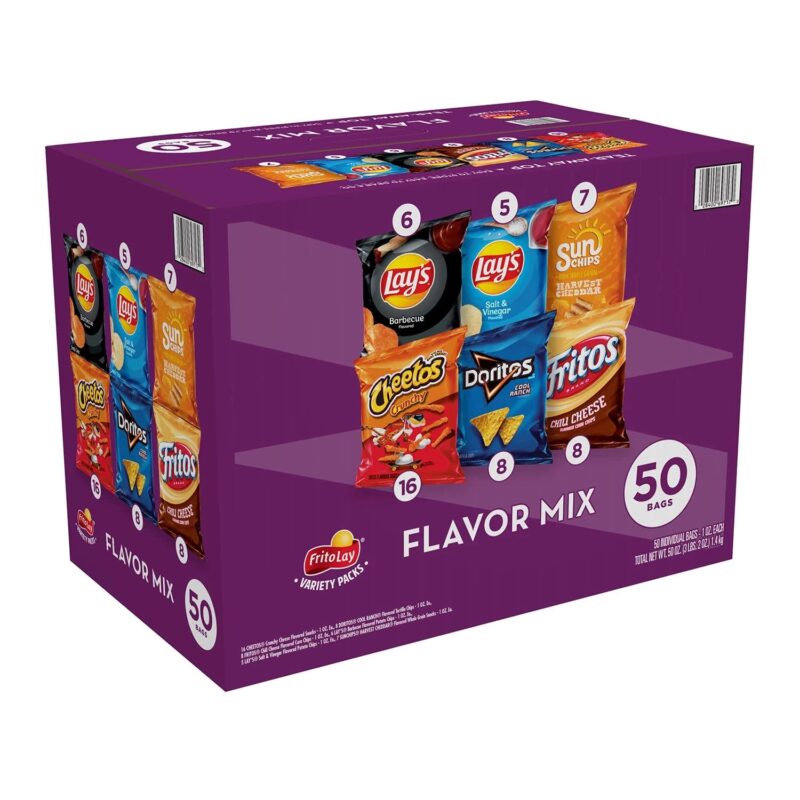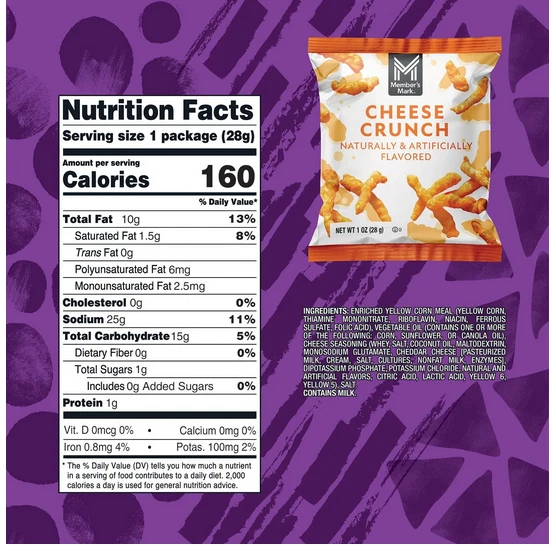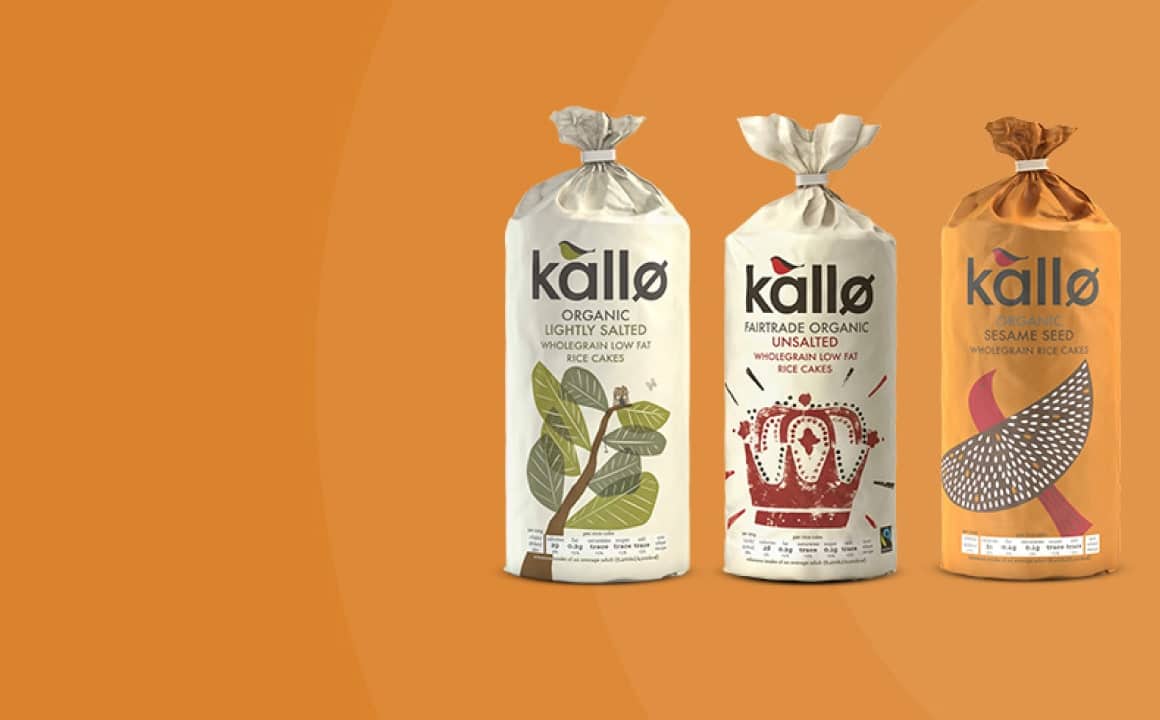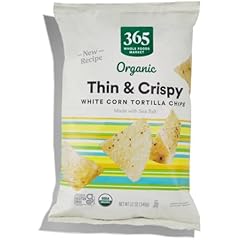WEEKLY DISCOUNTS
-10% Discount
Products On Barilla
Chances are there wasn’t collaboration, communication there wasn’t a process agreed upon or specified.
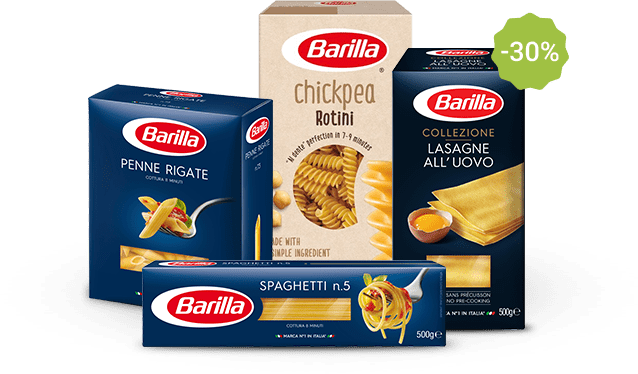
NEW SAUCES RANGE
Korean Style
Barbecue Sauce
Chances are there wasn’t collaboration, communication there wasn’t a process agreed upon or specified.

FRUITS PREMIUM DRINK
Best Juice
For Drink For You
It’s like saying you’re a bad designer, use less bold text, don’t use italics in every other paragraph. True enough.

Discounts and promotions
Bugles, Chex Mix & Gardetto Variety Pack Snacks, 40 pk.
Frito Lay Bold Mix Variety Pack Chips (50 Count)
Frito Lay Classic Chips Variety 1 Ounce (54 Count)
Frito Lay The Walking Taco Variety Pack Chips, 14 pk.
Frito-Lay Classic Mix Variety Pack Chips, 50 pk.
Frito-Lay Flavor Mix Chips And Snacks Variety Pack (50 Count)
Member’s Mark Favorites Variety Pack Chips, 1 oz., 42 pk.
New offers







